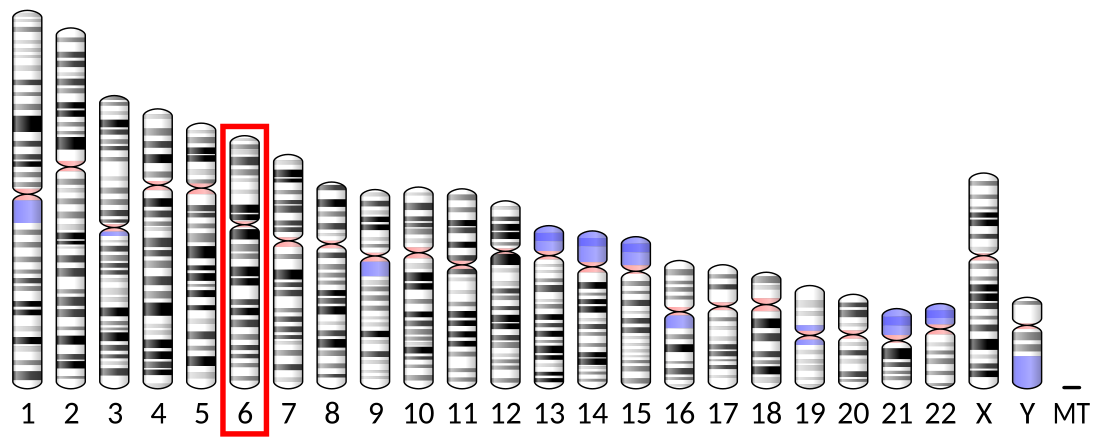Top Qs
Timeline
Chat
Perspective
Transmembrane protein 151b
Transmembrane protein From Wikipedia, the free encyclopedia
Remove ads
Transmembrane protein 151B is a protein that in humans is encoded by the TMEM151B gene.[5]
Remove ads
Nomenclature
The Transmembrane protein 151B gene is also known as TMEM151B, C6orf137, and bA444E17.5.[6]
Gene
The gene is located on the positive strand of chromosome 6 at the location 6p21.1 from the chromosome position 44270450 to 44279444, for a total length of 8,995 base pairs.[7] It is a complex locus that contains both TMEM151B and SPATS1.[8] TMEM151B has one paralog: TMEM151A.[9]
Transcript
The mRNA contains 3 exons, with a transcribed mRNA length of 4911bp, and the coding region containing 1701bp.[7]

Protein
Summarize
Perspective


The protein has a length of 566 amino acids and contains two transmembrane domains.[6] According to Compute pI/Mw, molecular weight of approximately 61 kDa, which matches the weight listed on NCBI, and a theoretical isoelectric point of 6.72.[11][6] The human TMEM151B protein composition is poor in lysine and arginine, lysine comprising 1.4% of the amino acids and arginine making up 0.8% of the total protein. The mouse ortholog is also arginine poor.[12]
Expression

RNA-seq gene expression profiling shows high expression in the brain, and notable expression in the testes.[14] NCBI geo profiles similarly show localization to the brain tissues.[15] Within the mouse brain, TMEM151B has high expression particularly within the cerebellum, medulla, and olfactory bulb according to the Allen Brain Atlas.[13]
Protein interactions
The TMEM151B protein interacts with one other protein according to BioGRID.[16]
Remove ads
Homology and evolution

The TMEM151B gene is conserved within most vertebrates, and appears to be conserved within some invertebrates. Its paralog, TMEM151A, has a 47.7% sequence identity with TMEM151B.[9][18] The evolution rate is relatively slow: between the rate of change in fibrinogen alpha and cytochrome c.[9][19]


Remove ads
Research
Alternative splicing of TMEM151B along with 4 other genes were linked to colorectal cancer.[20] It was also found to be up-regulated in post-menopausal breast cancer.[21][22] A SNP found within TMEM151B is associated with the development of lean muscle.[23]
References
Further reading
Wikiwand - on
Seamless Wikipedia browsing. On steroids.
Remove ads




